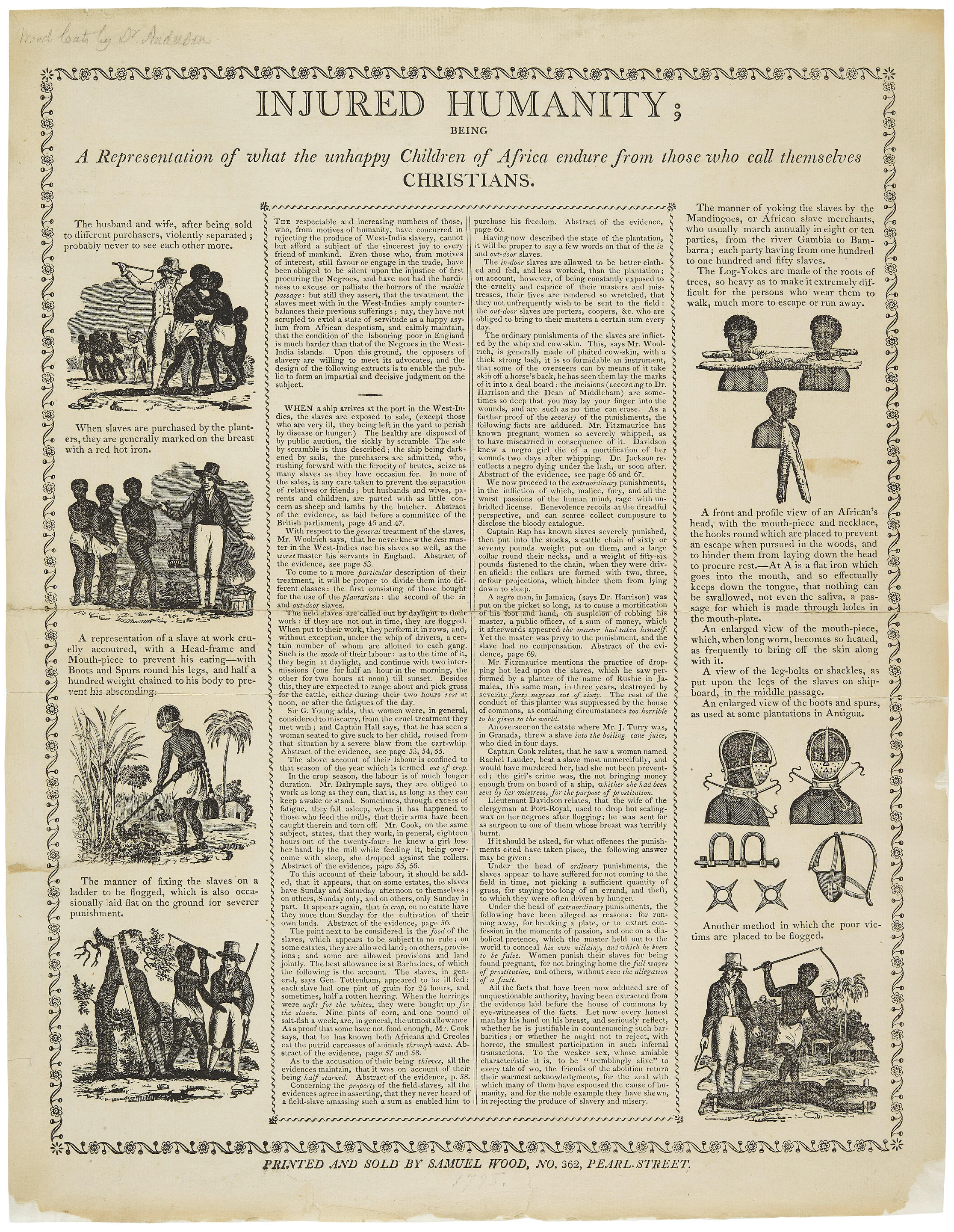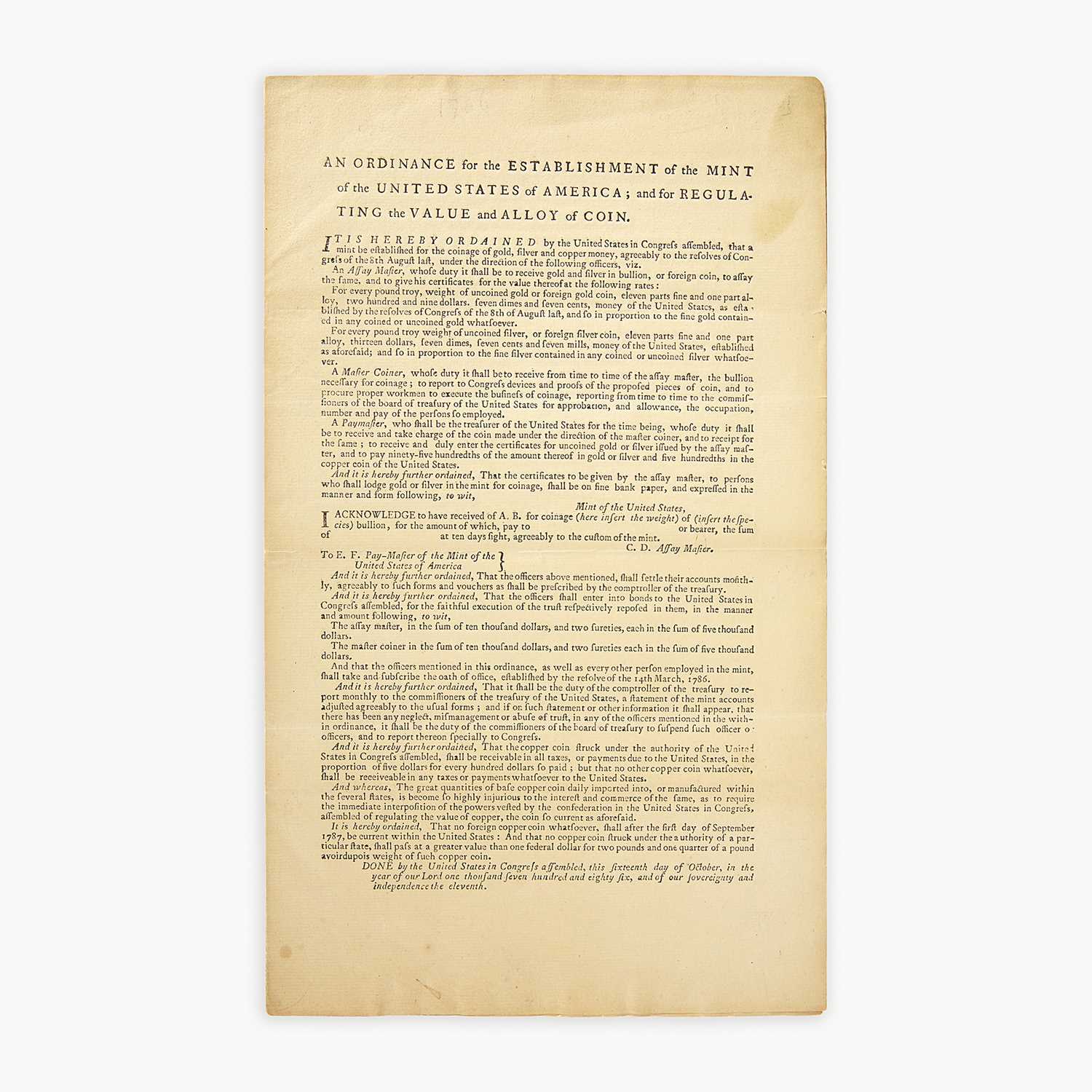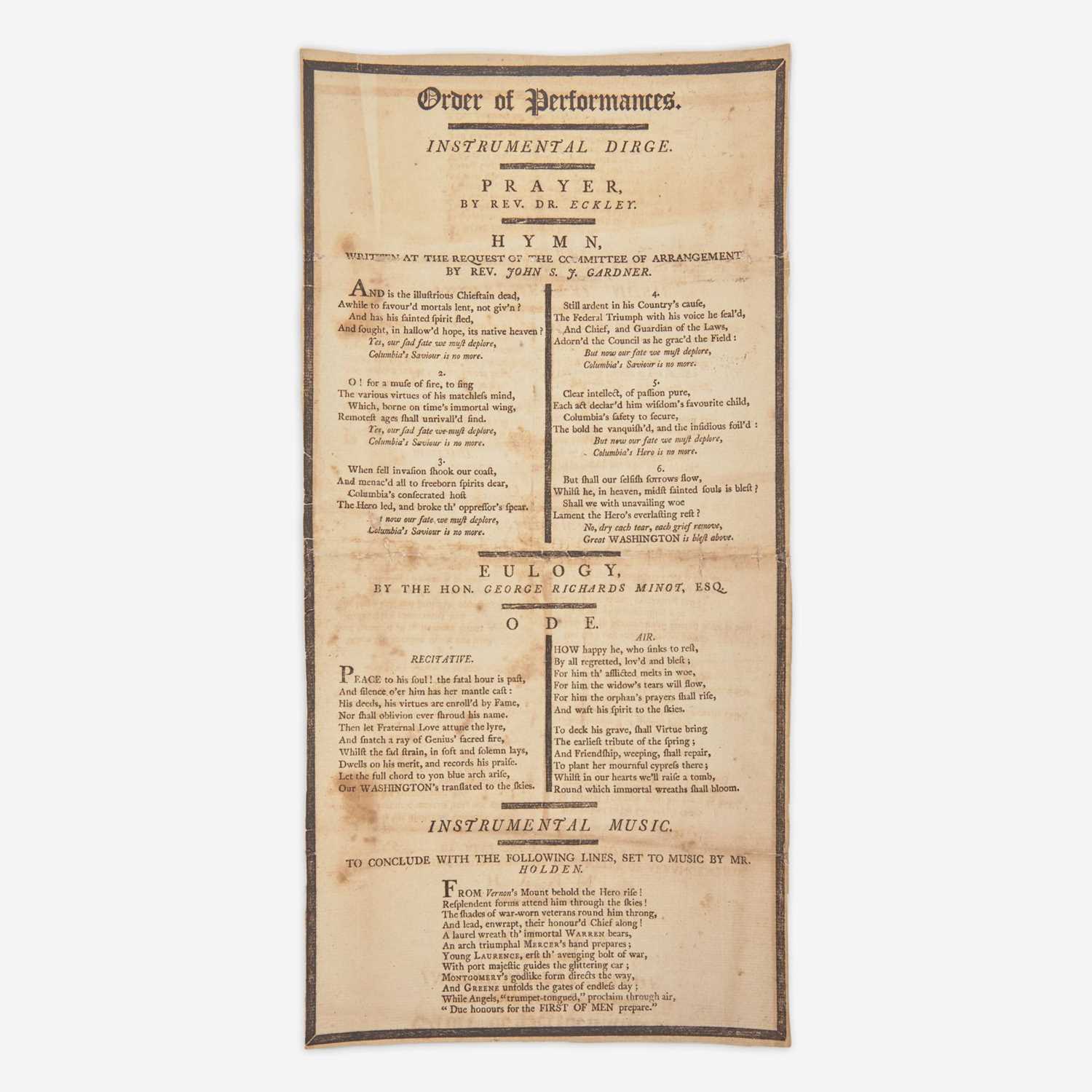HAMILTON, Alexander. Printed broadside signed ("Alexander Hamilton"), Treasury Department, 18 December 1790. 1 page, 4to, silked, chipped along left and edge. In a giltwood frame (24 x 24 in.), with engraved portrait of Hamilton and a broadside "Description of the Scale accompanying Dycas's Hydrometer" . EVALUATING AN INVENTION "TO RENDER THE DUTY MORE EQUAL AND EQUITABLE". Hamilton's circular letter to his custom's officers explains a new device for assessing the proof of alcohol and spirits for taxation. "You will have perceived by the Act of the last session, entitled, 'An Act making further Provision for the payment of debts of the United States,' that, after the end of the present month, the duties on distilled spirits are regulated according to certain classes of proof to be determined by Dycas's Hydrometer....Inclosed are directions for using the hydrometer [the broadside]...you will also receive herewith a tin Cylinder, which you will find useful for containing the liquor to be proved. It may serve to aid the officers to be informed, that the first of the classes of the proof mentioned in the law, corresponds with Gin, the second with St. Croix rum, the third with Antigua rum, the fourth with Jamaica spirits, the fifth with the usual strength of high Wines, and the sixth or last with what is called Alcohol . Hamilton also sends along a second kind of measuring device to confirm readings on Dyca's hydrometer. "The success of it cannot fail to add materially to the security and efficacy of the revenue..." The descriptive broadside that accompanies Hamilton's letter is itself quite rare; the Dycas system ultimately proved too inaccurate for its intended use.
HAMILTON, Alexander. Printed broadside signed ("Alexander Hamilton"), Treasury Department, 18 December 1790. 1 page, 4to, silked, chipped along left and edge. In a giltwood frame (24 x 24 in.), with engraved portrait of Hamilton and a broadside "Description of the Scale accompanying Dycas's Hydrometer" . EVALUATING AN INVENTION "TO RENDER THE DUTY MORE EQUAL AND EQUITABLE". Hamilton's circular letter to his custom's officers explains a new device for assessing the proof of alcohol and spirits for taxation. "You will have perceived by the Act of the last session, entitled, 'An Act making further Provision for the payment of debts of the United States,' that, after the end of the present month, the duties on distilled spirits are regulated according to certain classes of proof to be determined by Dycas's Hydrometer....Inclosed are directions for using the hydrometer [the broadside]...you will also receive herewith a tin Cylinder, which you will find useful for containing the liquor to be proved. It may serve to aid the officers to be informed, that the first of the classes of the proof mentioned in the law, corresponds with Gin, the second with St. Croix rum, the third with Antigua rum, the fourth with Jamaica spirits, the fifth with the usual strength of high Wines, and the sixth or last with what is called Alcohol . Hamilton also sends along a second kind of measuring device to confirm readings on Dyca's hydrometer. "The success of it cannot fail to add materially to the security and efficacy of the revenue..." The descriptive broadside that accompanies Hamilton's letter is itself quite rare; the Dycas system ultimately proved too inaccurate for its intended use.









Testen Sie LotSearch und seine Premium-Features 7 Tage - ohne Kosten!
Lassen Sie sich automatisch über neue Objekte in kommenden Auktionen benachrichtigen.
Suchauftrag anlegen